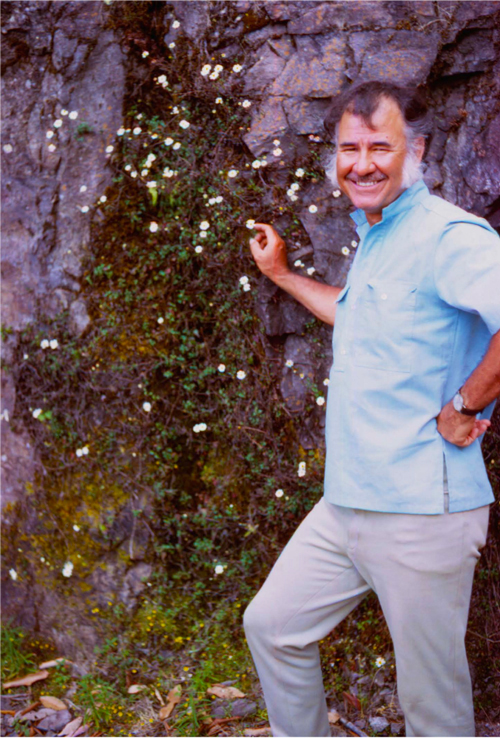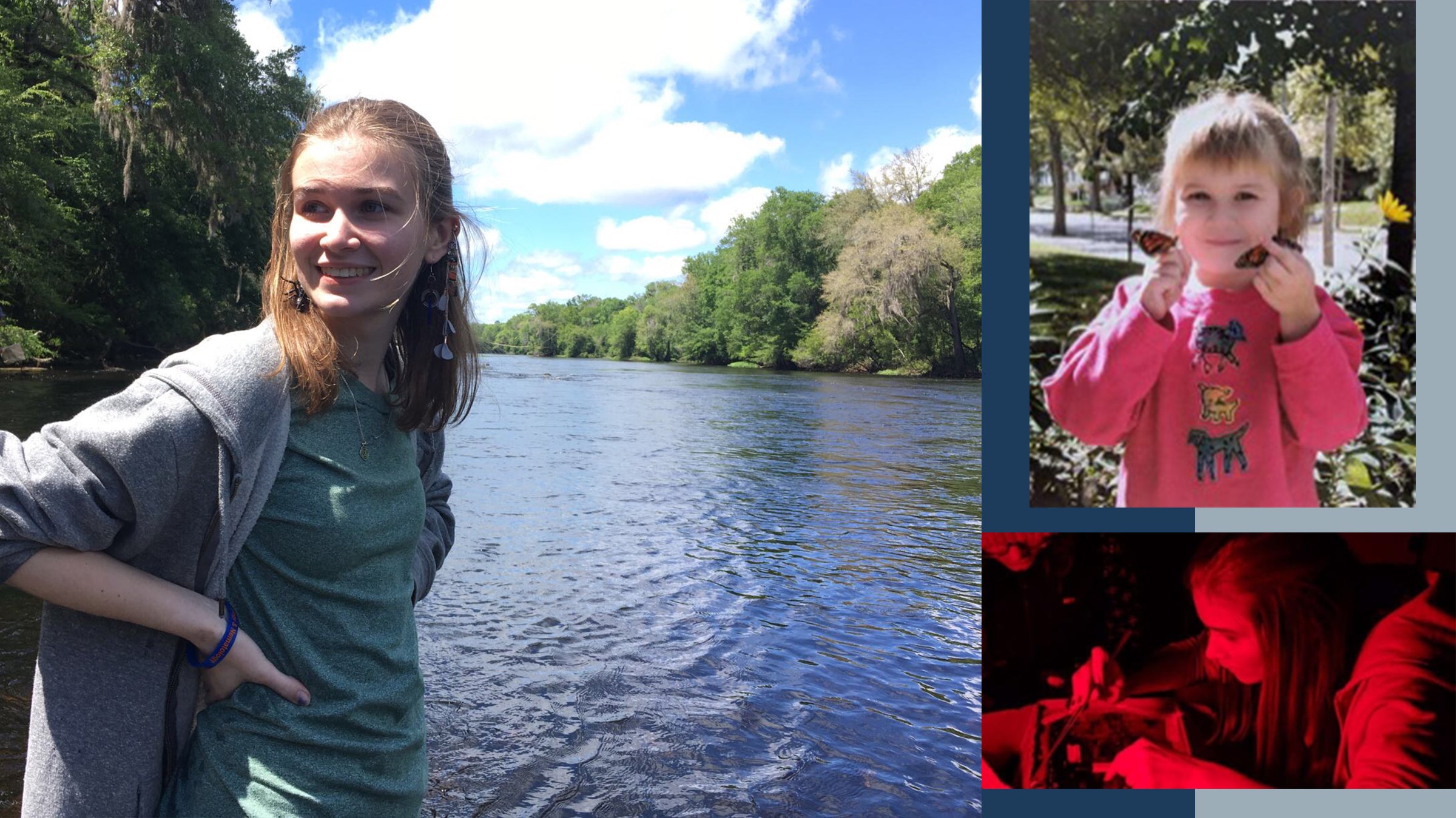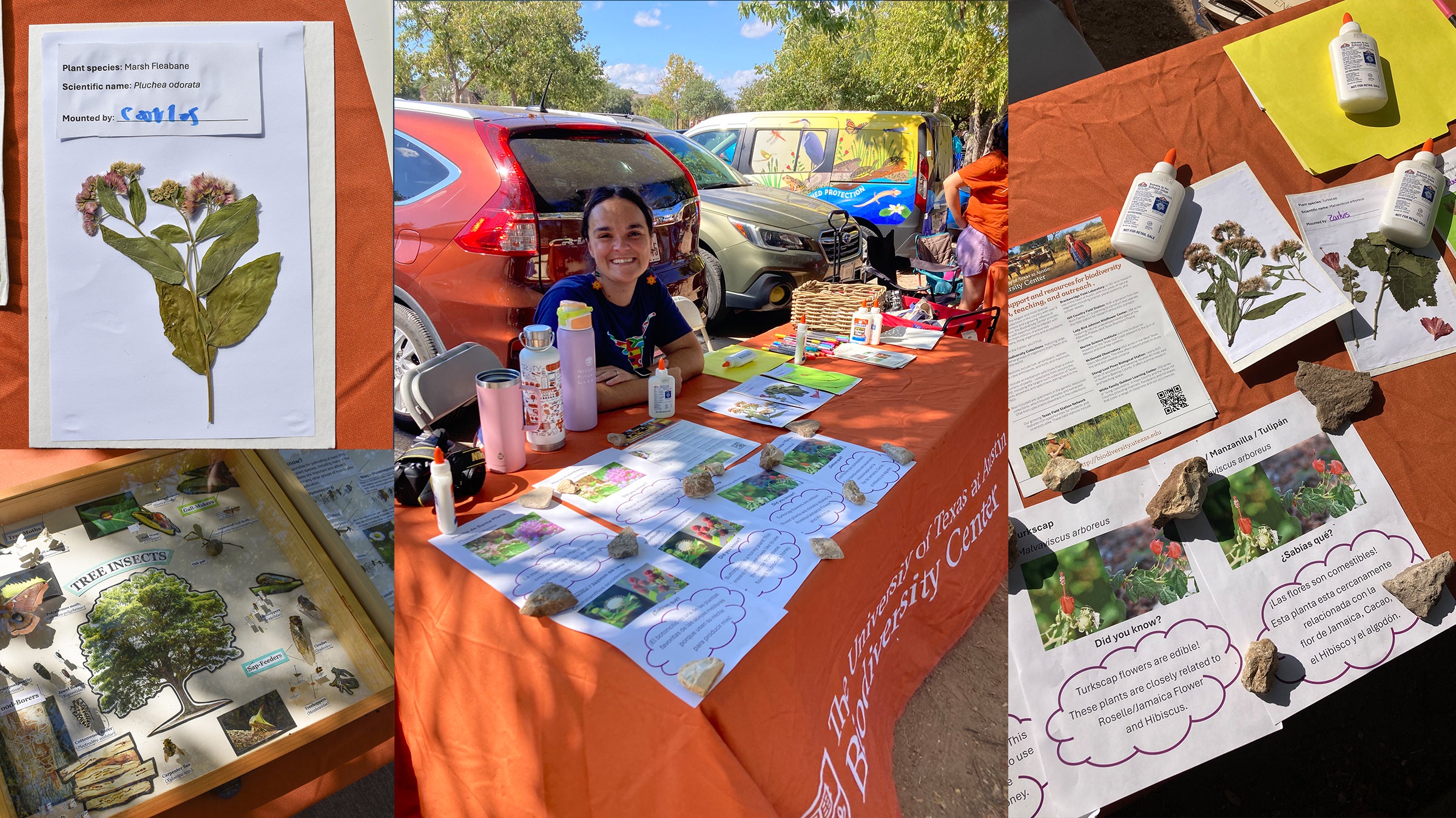
This is part four of a History of UT Botany series. This piece ran originally for the Department of Integrative Biology History Project on April 12, 2021.
I first met Billie Turner in early 2016. That was when I’d started working on the Integrative Biology History project, and as Turner had a seven-decade career, I knew I had to interview him. With so much to cover, one meeting would fold into another as he told me about the history of the department and his own long life. His influence on the field of botany was enormous. He authored more than 700 scientific reports and articles and named over 1,400 plant taxa including new combinations. He would shape the department at UT, grow its collections, and train over 60 Ph.D. students into full and impactful careers of their own.
Turner was born on February 25, 1925 in Yoakum, Texas, and would spend his formative years in a very difficult time in history, the Great Depression. Turner’s family was one of many affected as his father struggled to find work. “We were poor. Ate out of trashcans,” Turner told me, choking up at the memory.
In the late 1930s, Turner’s family moved to Texas City, Texas where Turner excelled in school and graduated as the high school valedictorian of his class in 1943. Being valedictorian was exciting for Turner who shared a humorous memory about the day he found out. The president of the local bank came to his house to give him an award for his achievement. “Our house in Texas City was right on the gulf front of Galveston Bay” he said, laughing. “When it got high tide,…all the stuff from your toilet got pushed up. So the whole yard was full of poo poo. And I’ll never forget that banker president stepping through it.”
Turner’s high school graduation occurred when another world crisis was already in play, World War II. After graduating, Turner was drafted immediately then volunteered for the air force. He was promoted to second lieutenant in the 15th Air Force Division in Italy. He served as navigator of B-24s that bombed Germany, was shot down and crash landed in Switzerland. He earned a Purple Heart.

This time in the army was also when Turner had first learned about evolution, something not taught in Texas schools when he was a boy. “The air force had a book on evolution, and I’d never even heard of it, never heard of Darwin.” That book had an impact on him. Turner shared that while other officers would use their time off to visit prostitutes, he would be out looking at flowers.
After being repatriated, Turner returned from Europe and taught navigation until the war was over. He played football for the US airforce where he suffered a broken wrist. To heal this injury, he went to an army hospital in El Paso, Texas. This was also the time he would harness benefits of the G.I. Bill, officially the Servicemen’s Readjustment Act of 1944, established to create hospitals, low-interest mortgages and tuition stipends for veterans. Turner wanted to use the educational benefit, but because of some rules of the bill, he couldn’t attend school in El Paso where he was. So, he would take a train to Sul Ross State University in Alpine, Texas. “I would spend two nights a week in El Paso,” Turned explained, “and then go to Sul Ross…200 hundred miles away...stay there for five days a week…then I’d go back to El Paso for two nights. I did this for a whole year and they never knew I was doing it.”
Turner had started at Sul Ross with the intent to be a lawyer. However, he found his true calling in a botany class taught by Barton Warnock, a botanist and leading authority on the flora of West Texas. Turner forgot about law and would go on to earn three degrees in only six years: a BS in Biology at Sul Ross (1949), an MS in Biology from Southern Methodist University (1950), and his Ph.D. in Botany at Washington State University (1953).

Posing in 1970 with Perityle turneri (Asteraceae), one of many species named in Turner's honor. (Photo: Mike Powell)
While at Sul Ross, Turner’s early work was in grasses because, as he tells it, “no one there at the time could identify them so I took pride in being able to do that.” Ultimately, however, Turner would work with two angiosperm families, Asteraceae and Fabaceae.
When Turner came to UT in 1953, he was hired as an instructor. It was his first academic position, but not permanent. As he put it, then chairman of the botany department, Gordon Whaley, had told him, “If you write a book about legumes of Texas, we might take you on the department.” Turner did just that in about three months. This book was The Legumes of Texas and was the first book on botany UT had published. The book did well at the time since there was not much published information on Texas plants. Whaley followed through on his promise, but to give Turner tenure, he had another request.
Whaley asked Turner, who was around 30 at the time, to go to Africa for a year to work with plant physiologist and ecologist Homer Schantz, who was around 80. Turner did. “All it was was one fight after another, [between] an older man who had lost his mind and a younger man who had his,” he said about the experience. However challenging it might have been, Whaley followed through in his promise to Turner. Turner was promoted to Assistant Professor with tenure. He would be promoted to Full Professor two years later in 1959. Turner would later write about his experience with Schantz in the book Leader of the Pack.
All of this was happening around the time Turner was working on biochemical systematics, using chemistry to classify plants. Turner was also involved in new developments using chromosome numbers and subsequently chemosystematics to classify plants and examine evolutionary relationships. Collaborations with botanists like Ralph Alston, Jeffrey Harborne and Tom Mabry would result in two books: Biochemical Systematics (1963 with Alston) and Plant Chemosystematics (1984 with Harborne). Turner was also a bit ahead of the curve in his early career by predicting that protein sequencing and DNA studies would resolve phylogenetic relationships in plants.
Turner spoke at length about the focus of DNA being a reason for what he felt were negative changes in the Department of Botany, a department he says that “peaked” in the late 1960s. For some context: in 1899, the School of Biology at UT separated into a School of Botany and a School of Animal Biology. In 1920, the two schools were renamed into departments, the Department of Zoology and the Department of Botany and Bacteriology, and both continued to expand. In 1996, with further growth in biology, and with the advent of modern molecular and cellular biology, the distinction between Zoology and Botany seemed increasingly artificial, and hence the decision was made to reunite all of biology into a School of Biological Sciences.
Before this integration, Turner chaired both the Department of Botany and the Division of Biological Sciences in the late 1960s and the early 1970s. This was an era in which UT became a prominent center for botanical research.
Another area where Turner had a great impact was on the herbarium. But when Turner started at UT, the herbarium was not what it is today: over one million specimens and growing at a rate of about 7000 annually. When Turner became the herbarium director in 1967, there were 200,000 specimens. Gordon Whaley, who was by that time Dean of the Graduate School, had requested a review of the herbarium. The results were not stellar, and the recommendation was the herbarium should be discarded. Many of the specimens did not have adequate information on their labels. As the new director, Turner was upset by this. He had inherited what he estimated to be half of the sheets without data, making them pretty much useless. “I threw them all away,” Turner said. Then in his spare time, he would number the remaining sheets. “I think I stamped about 150,000 sheets.”
This was around the time when the herbarium was housed in four rooms at the top floor of the Biological Sciences Building (BIO). Under Turner’s guidance, the herbarium would begin to grow, particularly from acquisitions from botanist Dr. Cyrus Lundell’s herbarium. Turner also orchestrated the move from BIO to the herbarium’s current location in the Main Building. When it moved it, the collection started out on three floors, then grew to occupy nine floors today.

In 2017, the Plant Resources Center was renamed to the Billie L. Turner Plant Resources Center. Turner would pass away in 2020 at the age of 95 after years of declining health and contracting COVID-19.
What I recall most about Turner are several things. First, his humor. Second, his energy. Although he retired in 1998, he was still making daily trips to the herbarium, even on weekends. But perhaps the most unique quality was his honesty. In my role then as historian, his unshielded experiences were essential for me to understand the department. Turner knew this himself, for one of the first things he said to me when we met was: “I don’t have any secrets at all,” he had admitted with a twinkle in his eye, “and that’s what people like least about me.”
Thanks to George Yatskievych, Curator in the Billie L. Turner Plant Resources Center, for his review and editorial suggestions on this piece.



